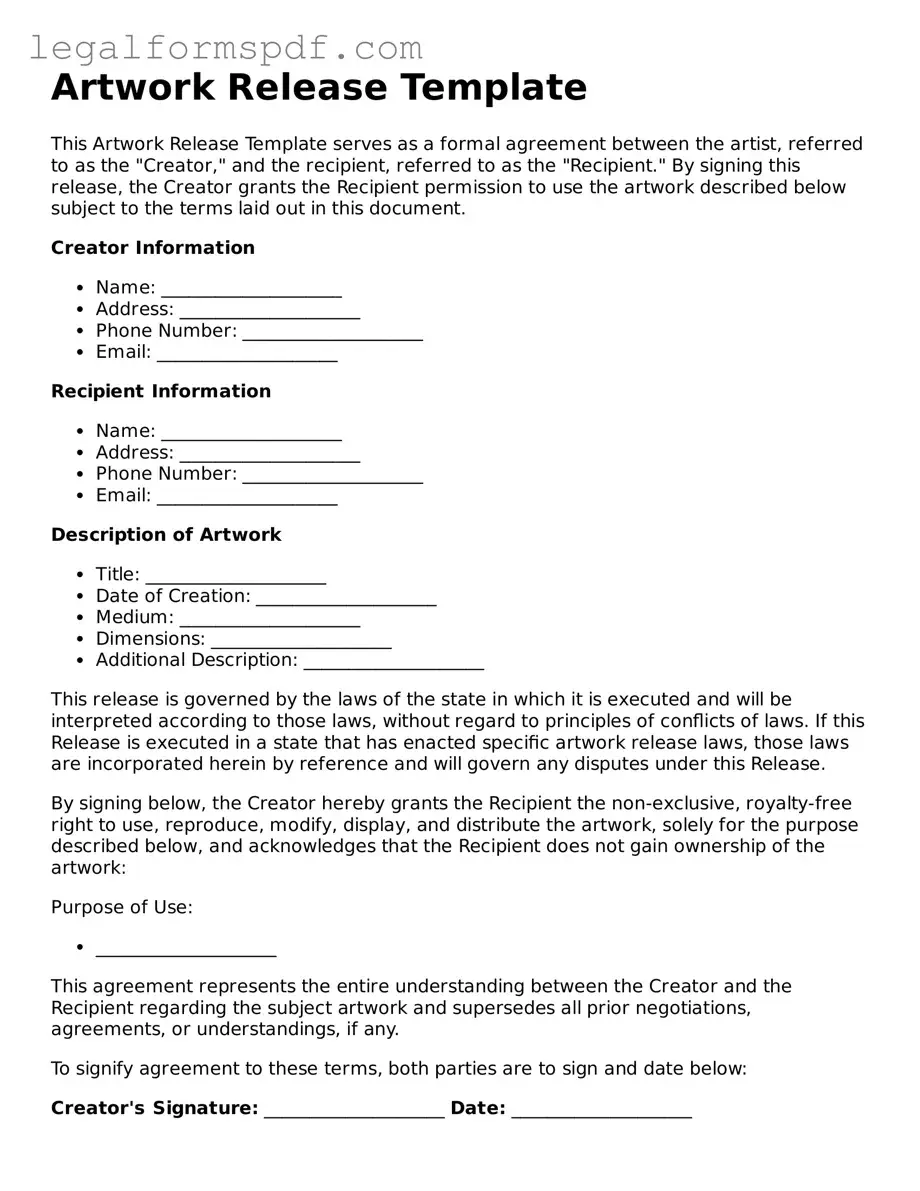Artwork Release Template
This Artwork Release Template serves as a formal agreement between the artist, referred to as the "Creator," and the recipient, referred to as the "Recipient." By signing this release, the Creator grants the Recipient permission to use the artwork described below subject to the terms laid out in this document.
Creator Information
- Name: ____________________
- Address: ____________________
- Phone Number: ____________________
- Email: ____________________
Recipient Information
- Name: ____________________
- Address: ____________________
- Phone Number: ____________________
- Email: ____________________
Description of Artwork
- Title: ____________________
- Date of Creation: ____________________
- Medium: ____________________
- Dimensions: ____________________
- Additional Description: ____________________
This release is governed by the laws of the state in which it is executed and will be interpreted according to those laws, without regard to principles of conflicts of laws. If this Release is executed in a state that has enacted specific artwork release laws, those laws are incorporated herein by reference and will govern any disputes under this Release.
By signing below, the Creator hereby grants the Recipient the non-exclusive, royalty-free right to use, reproduce, modify, display, and distribute the artwork, solely for the purpose described below, and acknowledges that the Recipient does not gain ownership of the artwork:
Purpose of Use:
This agreement represents the entire understanding between the Creator and the Recipient regarding the subject artwork and supersedes all prior negotiations, agreements, or understandings, if any.
To signify agreement to these terms, both parties are to sign and date below:
Creator's Signature: ____________________ Date: ____________________
Recipient's Signature: ____________________ Date: ____________________
State of Execution: ____________________
It is advised that both parties retain a copy of this document for their records and, if necessary, consult with a legal professional to ensure that their rights and interests are fully protected.
